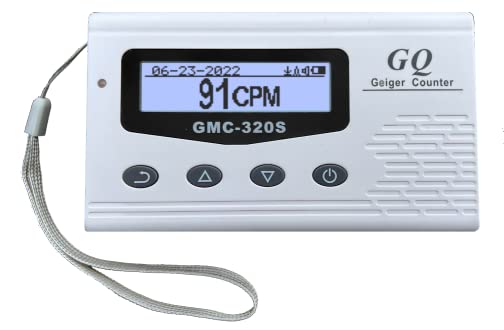- Joined
- Dec 13, 2017
- Messages
- 1,571
For those who are looking just thought I'd let you know:
This is a UDR 13
https://www.ebay.com/itm/AN-UDR-13-...ondition-Original-Carrying-Case-/263242205859
PROs:
Actual device used by various high end CBRN/WMD military response teams.
Easy to use ("soldier proof")
as rugged as detectors get.
fully hardenend against EMP
Effective for Gamma and Neutrons (Gamma is the most important for your application)
Sensitive but scale can be changed in various ways.
Takes AAA
CON: Is actually designed as a personal dosimeter not a detector. However it can be used as a detector and display "dose-rate" not just "Dose"
I have used these many times in real world responses with real radiation.
Been pretty happy with them. Clarification I always had other more purpose designed detectors on me as well.. but believe between the price ruggedness and usability its a good choice for the prepper who is concerned w/ rad detection.
UDR13s now on market because the Army as the primary proponent on CBRN/WMD response has gone to UDR14.
Only difference really is UDR14 is more sensitive.
I never understood the move and dindt agree with it, but here we are.
So now these are available from surplus.
I think the Army and Airforce originally paid $850 dollars for them ( which was actually kinda reasonable for the quality IMO)
Now can be brought for $125...
Just thought some folks would like to know.
This is a UDR 13
https://www.ebay.com/itm/AN-UDR-13-...ondition-Original-Carrying-Case-/263242205859
PROs:
Actual device used by various high end CBRN/WMD military response teams.
Easy to use ("soldier proof")
as rugged as detectors get.
fully hardenend against EMP
Effective for Gamma and Neutrons (Gamma is the most important for your application)
Sensitive but scale can be changed in various ways.
Takes AAA
CON: Is actually designed as a personal dosimeter not a detector. However it can be used as a detector and display "dose-rate" not just "Dose"
I have used these many times in real world responses with real radiation.
Been pretty happy with them. Clarification I always had other more purpose designed detectors on me as well.. but believe between the price ruggedness and usability its a good choice for the prepper who is concerned w/ rad detection.
UDR13s now on market because the Army as the primary proponent on CBRN/WMD response has gone to UDR14.
Only difference really is UDR14 is more sensitive.
I never understood the move and dindt agree with it, but here we are.
So now these are available from surplus.
I think the Army and Airforce originally paid $850 dollars for them ( which was actually kinda reasonable for the quality IMO)
Now can be brought for $125...
Just thought some folks would like to know.




